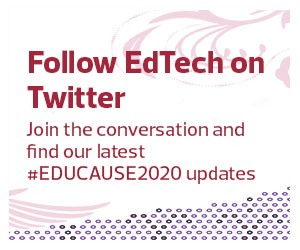DX Requires More Than the Latest Technology
Pursuing — let alone achieving — digital transformation is about more than simply investing in the technology du jour. “DX is intentional, strategic and transformational, and it doesn’t happen all at once,” said Kathe Pelletier, director of the teaching and learning program at EDUCAUSE.
“When we say ‘digital transformation,’ we’re talking about the process of optimizing and transforming operations, strategic directions and value propositions through deep and coordinated shifts in culture, workforce and, technology,” Pelletier told conference attendees. Put into context, she explained, DX can be divided into three “stair step” phases that involve increased integration, coordination and transformation.
- Digitization: This is the process of changing from analog or physical formats to digital ones. For example, Pelletier explained, this could mean shifting away from paper records, like student or faculty identification cards, in favor of digital options.
- Digitalization: This stage could involve evolving toward the use of digital technologies to transform individual institutional operations such as registration, admissions, payroll and procurement.
- Digital transformation: This a complete optimization and transformation of an institution’s operations, strategic directions and value proposition.
At Davenport University in Michigan, a critical element of digital transformation has been the transition to a blended learning model designed to provide students with improved flexibility and accessibility — an effort that actually predates the COVID-19 pandemic and subsequent shift to remote learning. As a result, students can shift between learning modalities depending on their individual needs and comfort levels, said Brian Kowalczk, a faculty member in the school’s college of technology.
“Obviously this is a big change in thinking, but the goals of doing that were focused on our students,” he explained during the session. Since then, he continued, the university has seen higher student satisfaction, along with improved retention rates.
“The flex learning model represents digital transformation at Davenport because it’s enabling a new educational model based on choice and flexibility,” said Kriss Ferluga, director of university academic services at Davenport. “Putting this choice in students’ hands strengthens their paths to degree completion because we don’t have to cancel as many classes, and familiarity with flex did help us to quickly pivot when the pandemic arrived in March of 2020.”













